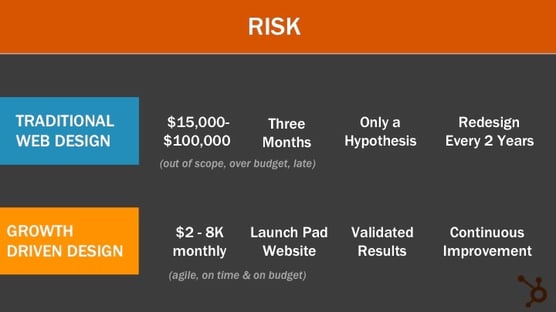 Do you have a transportation website that’s not being found online?
Do you have a transportation website that’s not being found online?
If so, you can stop pounding your head on the desk because there’s a solution. It has been found that traditional website design and development is broken because, at it’s core, traditional website design is all about the look and feel of an online presence, and not about the business results that it can produce.
“Results?”, you ask. Yes, results. Ideally, what a website design process should value is true business results that align with your business’ growth goals.
Your transportation website SHOULD be your best sales rep. That’s right — it should work on your company’s behalf 24/7. For example, if your company’s goal is to grow by 12% in the next year, the traffic and warm leads that a business receives from a website should be one of the main ways to get you there.
However, this isn’t always the case because a majority of websites are built based on aesthetics. And it’s impossible for a website to work on your behalf when it’s built this way since its focus is not on true business growth. In order for a website to be an investment into your business that maximizes results through continuous improvement over time, it needs to be built using specific data and what is learned from this data.
Risk vs. Investment
To illustrate this point further, let’s briefly talk in terms of business risk when it comes to building a website in the traditional way.
In your initial conversations with a website designer, he’ll ask you what you are looking to build — what colors are optimal, what logo you want to use or have created, what you’d like to include on the site, and whether you have content or need to write content.
Essentially, the designer will want to know what you envision and how he can help you bring this vision to life. And although there’s nothing inherently wrong with building transportation websites this way, it cuts out the possibility of a website being built for business growth.
Below is an infographic that lays out the differences between traditional web design and growth-driven design.
1.) With traditional web design, businesses pay approximately $15-$100k vs. $2-$8k to get a strategic “launchpad” website published.
2.) With traditional web design, companies wait approximately three months to get a web presence vs. using those 90 days to collect user data.
3.) Traditional websites require a re-design every year vs. continuously testing to see what’s working, what your unique audience is responding to, and how the website can be continuously improved for even greater results in the form of visits, leads and sales opportunities.
You Don’t Know What You Don’t Know
Remember that conversation with the web designer, when he was asking YOU what you wanted and the questions all revolved around how the website would look and how you wanted to appear to your audience?
Well, with all due respect to branding and visual attraction that come with traditional web design, niether YOU (the business owner) or the web designer had the answers to those questions at that point in time because you did not have the data.

The first line of business should be to publish or “launch” a website based on a strategy that weaves in validated results from your potential customers.
Here is the two-step process for how this is accomplished:
Phase 1: Come up With a Strategy
Coming up with a strategy involves gaining an empathetic understanding of your users and how to best fit the website into their life.
This Process Includes:
- Looking at Your Company’s Business Goals
- Looking at Your Company’s Buyer Personas
- Doing Customer Journey Mapping
From here, the assumptions that you come up with are validated through user research. Then, a “wish list” is created based off of what was learned in Phase 1. During this time, site elements, sections, pages and features are examined on a granular level and then all of these elements get put on what we’ll call a “wishlist”.
Phase 2: Publish a Launchpad Website
Growth-driven design is a process. This being said, a “launchpad” website is a minimum viable product (MVP) that will serve your minimum viable audience (MVA). In other words, it’s the core of the website. The main idea here is to get something published quickly so that the business can start listening and collecting information from users so that this launchpad site can continue to be improved on and built out further and further based on the evidence that’s found.
Growth-driven design is built on the philosophy that there is nothing that’s perfect. The only website that’s perfect is one that serves YOUR customers. So, a launchpad site, the core of the website, must be launched quickly so that this data can begin to be collected.
A launchpad website can be built and launched quickly by prioritizing wish list items in the strategy phase and then pulling out the first 20% of the must-have items and using them to build the launchpad site out.
There is a Better Way
In essence, growth-driven design is a smarter approach to building business websites. It’s more streamlined, it produces results and helps businesses grow by producing peak-performing websites. If you’re done with a poor-performing online presence and ready to create a lead and sales engine for your business through inbound marketing and growth-driven design, the good news is that the hard work of figuring out how it’s done has already been accomplished.


